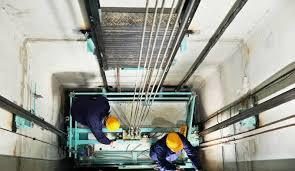Cargo elevators play a vital role in ensuring efficient operations in various industries, including retail, logistics, hospitality, and manufacturing. Optimizing their usage can lead to significant improvements in productivity, safety, and cost-effectiveness. Here are strategies to optimize cargo elevator usage in your business:
1. Assess Your Current Usage Patterns
- Data Collection: Track usage data for your cargo elevators, including frequency of use, peak hours, and types of loads transported. This data can help identify patterns and areas for improvement.
- Feedback from Staff: Gather input from employees who use the cargo elevator regularly. Their insights can provide valuable information about potential inefficiencies or issues.
2. Implement a Scheduling System
- Time Management: Create a schedule for cargo elevator usage during peak business hours. Designate specific times for deliveries, inventory replenishment, and other high-traffic activities to avoid congestion.
- Booking System: Consider implementing a booking system that allows employees to reserve elevator time for larger loads. This can help streamline operations and reduce wait times.
3. Optimize Load Management
- Load Weight and Size Limits: Ensure employees are aware of the cargo elevator’s weight and size limits. Properly distributing loads can prevent overloading, which may lead to mechanical issues and delays.
- Maximize Capacity: Train staff on how to load the elevator efficiently. Encouraging them to make full use of available space can reduce the number of trips needed and save time.
4. Enhance Maintenance Practices
- Regular Inspections: Schedule regular maintenance checks to ensure that the cargo elevator is operating at peak efficiency. Address any issues promptly to minimize downtime.
- Predictive Maintenance: Utilize technology to implement predictive maintenance strategies that anticipate potential problems based on usage patterns and performance data. This can prevent unexpected breakdowns and extend the elevator’s lifespan.
5. Improve Safety Protocols
- Training Programs: Conduct training sessions for employees on safe cargo elevator usage. Emphasize the importance of adhering to safety guidelines, including load limits and proper loading techniques.
- Safety Features: Ensure that safety features, such as emergency stop buttons, alarms, and load sensors, are functioning correctly. Regularly check these features as part of your maintenance routine.
6. Utilize Technology
- IoT Integration: Consider integrating Internet of Things (IoT) technology to monitor elevator usage in real-time. IoT systems can provide insights into performance metrics and alert you to issues as they arise.
- Smart Elevators: Invest in smart cargo elevators that can optimize travel routes based on real-time demand, reducing wait times and improving overall efficiency.
7. Create Clear Signage and Instructions
- User Guidelines: Install clear signage near the cargo elevator to remind users of operational guidelines, safety protocols, and loading instructions.
- Emergency Procedures: Post emergency procedures prominently to ensure that all employees know what to do in case of an emergency or elevator malfunction.
8. Review and Revise Policies Regularly
- Continuous Improvement: Regularly review your cargo elevator usage policies and procedures. Gather feedback from staff and make adjustments as needed to enhance efficiency and safety.
- Benchmarking: Compare your cargo elevator performance against industry standards and best practices to identify areas for improvement.
9. Consider Upgrading or Expanding
- Assess Capacity Needs: If your business has grown or experienced changes in demand, evaluate whether your current cargo elevator meets your needs. Upgrading to a larger or faster model may be necessary.
- Adding Additional Elevators: In high-traffic environments, consider installing additional cargo elevators to reduce congestion and improve overall efficiency.
Conclusion
Optimizing cargo elevator usage is crucial for enhancing operational efficiency and ensuring safety in your business. By assessing current usage patterns, implementing effective scheduling, managing loads properly, and investing in technology and maintenance, you can significantly improve the performance of your cargo elevators.
These strategies will not only streamline operations but also create a safer and more productive environment for employees. With careful planning and continuous improvement, your business can maximize the benefits of its cargo elevators, leading to increased productivity and satisfaction.

